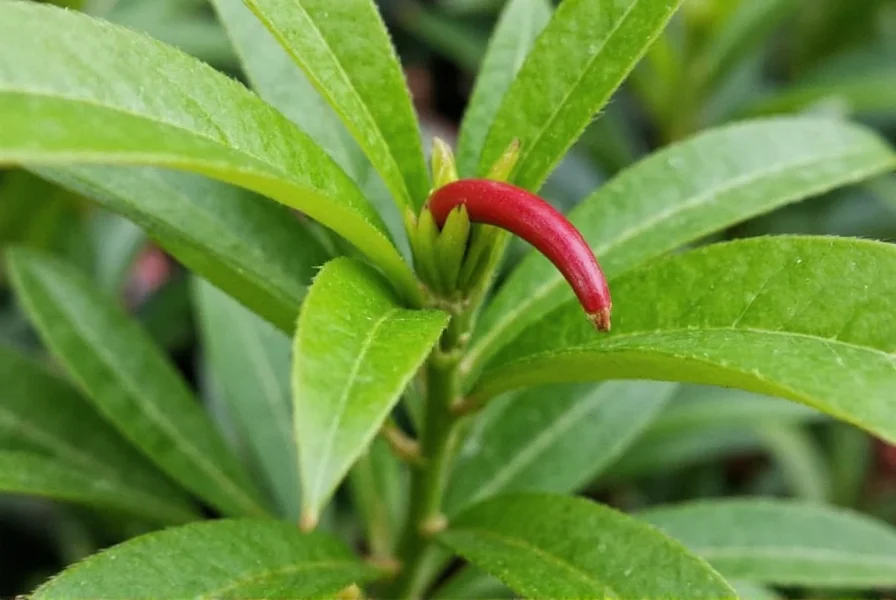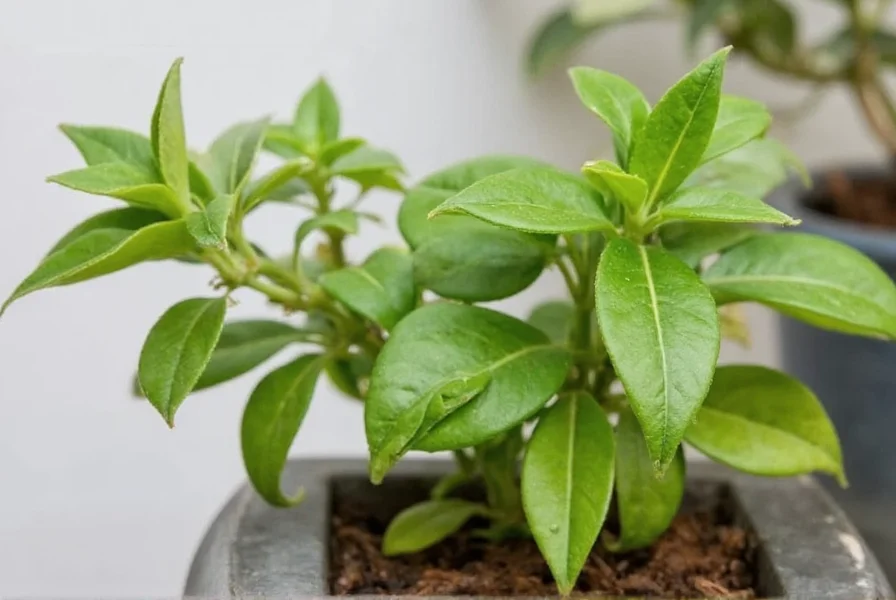The clove plant, scientifically known as Syzygium aromaticum (formerly Eugenia caryophyllata), represents one of the world's most valuable spice crops with a history spanning thousands of years. This evergreen tree belongs to the Myrtaceae family and grows naturally in tropical regions, particularly the Maluku Islands of Indonesia where it originated. Understanding the specific requirements for growing clove plants helps gardeners determine whether they can successfully cultivate this valuable spice tree in their particular climate.
Botanical Background and Historical Significance
Clove plants have played a significant role in global trade since ancient times. Historical records show cloves were traded as early as 176 AD in China, where emperors required visitors to chew cloves to freshen their breath before audiences. The spice became so valuable during the Middle Ages that it was often worth more than gold by weight. The Dutch maintained a monopoly on clove production for centuries by destroying trees outside their controlled islands, making genuine clove plants exceptionally rare outside their native habitat until the 18th century.
Physical Characteristics of the Clove Plant
Mature clove trees typically reach 26-40 feet (8-12 meters) in height with a conical shape and smooth gray bark. The leaves grow in opposite pairs, measuring 2-5 inches long with a glossy, dark green appearance and prominent veins. The most distinctive feature appears during flowering season when the tree produces clusters of crimson flower buds that gradually turn green, then red, before being harvested as cloves.
These flower buds contain the essential oil eugenol (70-90%), which gives cloves their characteristic aroma and medicinal properties. Each bud measures approximately 0.5-0.75 inches long with four projecting calyx lobes at the base. The tree produces small, purple-black berries after flowering, though these aren't commercially valuable like the flower buds.
Essential Growing Requirements for Clove Plants
Successful clove plant cultivation depends on meeting specific environmental conditions that mimic their natural tropical habitat. Understanding these requirements helps determine whether you can grow clove plants in your location.
| Growing Factor | Optimal Range | Notes |
|---|---|---|
| Temperature | 70-95°F (21-35°C) | Frost kills young plants; mature trees tolerate brief dips to 50°F (10°C) |
| Humidity | 70-90% | Essential for proper bud development |
| Rainfall | 59-79 inches (1,500-2,000 mm) annually | Distributed evenly throughout the year |
| Soil pH | 5.5-6.5 | Slightly acidic conditions preferred |
| Soil Type | Well-draining loam | Rich in organic matter; avoids waterlogging |
Step-by-Step Guide to Growing Clove Plants
Whether you're attempting to grow clove plants for commercial production or as an interesting specimen tree, following these cultivation practices increases your chances of success:
Propagation Methods
Clove plants grow best from fresh seeds extracted from ripe berries, though cuttings from mature trees also work. Seeds lose viability quickly, so plant them within 2-3 days of extraction. Germination typically occurs in 2-3 weeks when kept in warm, moist conditions. For home growers researching how to grow clove plant specimens, starting with nursery-grown saplings provides the best chance of survival.
Planting and Spacing
Plant clove trees during the rainy season in holes twice the size of the root ball. Space trees 20-30 feet apart to allow for proper air circulation and growth. Incorporate organic matter into the planting hole to improve soil structure and fertility. Young trees benefit from partial shade during their first 2-3 years before transitioning to full sun.
Watering Requirements
Maintain consistent moisture without waterlogging, especially during the first 3 years of growth. Established clove plants tolerate brief dry periods but produce better with regular rainfall or irrigation. During flowering and fruit development, ensure adequate water as drought stress reduces bud production. The clove plant watering needs increase during hot, dry periods but decrease during cooler months.
Fertilization Practices
Apply balanced fertilizer (10-10-10 NPK) every 2-3 months during the first 3 years. Mature trees benefit from organic compost applications twice yearly. Supplement with magnesium and zinc if deficiency symptoms appear. Proper clove plant care requirements include monitoring for nutrient deficiencies that affect leaf color and growth patterns.
Harvesting and Processing Cloves
Clove plants begin producing harvestable buds at 6-10 years old, with peak production occurring between 15-25 years. Harvest occurs when buds turn from green to pink but before they open into flowers. Workers hand-pick the buds early in the morning when oil content is highest.
After harvesting, cloves undergo sun-drying for 4-5 days until they turn dark brown and the stem becomes brittle. Properly dried cloves contain 15-20% essential oil and 12-15% moisture content. The entire process from bud formation to harvest-ready cloves takes approximately 6-8 months.
Common Challenges in Clove Plant Cultivation
Growing clove plants presents several challenges even in suitable climates. Understanding these issues helps implement preventive measures:
- Phytophthora root rot: Caused by waterlogged soil; prevent with proper drainage
- Clove bud mite: Tiny pests that distort developing buds; control with neem oil
- Drought stress: Causes leaf drop and reduced flowering; requires consistent moisture
- Frost damage: Even brief exposure to temperatures below 50°F (10°C) harms young trees
- Nutrient deficiencies: Yellowing leaves indicate possible nitrogen or magnesium deficiency

Can You Grow Clove Plants Outside Tropical Regions?
Many gardeners wonder if they can grow clove plant specimens in non-tropical climates. The answer depends on your specific conditions. In USDA zones 10-12, clove plants may survive outdoors with protection during occasional cold snaps. For most temperate regions, growing clove plants in containers offers the best chance of success.
Container growing requires:
- Using a 15-20 gallon pot with excellent drainage
- Moving plants indoors when temperatures drop below 60°F (15°C)
- Providing 6-8 hours of direct sunlight or supplemental grow lights
- Maintaining humidity above 60% through misting or humidifiers
- Using a slightly acidic potting mix with perlite for drainage
While container-grown clove plants rarely produce significant harvests, they can thrive as attractive ornamental specimens with proper care. The clove plant indoor growing experience provides educational value even without substantial spice production.
Traditional and Modern Uses of Clove Plants
Beyond their culinary applications, clove plants have numerous traditional and modern uses:
- Dental applications: Eugenol provides natural pain relief for toothaches
- Essential oils: Used in aromatherapy and natural cleaning products
- Traditional medicine: Employed for digestive issues and respiratory conditions
- Natural pesticide: Clove oil repels insects and rodents
- Cosmetic industry: Incorporated into soaps, perfumes, and skincare products

Conclusion: The Value of Understanding Clove Plant Cultivation
While growing clove plants presents challenges outside their native habitat, understanding their specific requirements helps gardeners make informed decisions about cultivation possibilities. Whether you're attempting commercial production in suitable climates or growing a single specimen tree as a conversation piece, the clove plant represents a fascinating connection to centuries of global trade and cultural traditions. Proper clove tree cultivation guide practices emphasize patience, as these slow-growing trees require several years before producing their valuable aromatic buds.
Frequently Asked Questions
How long does it take for a clove plant to produce harvestable cloves?
Clove plants typically begin producing harvestable buds 6-10 years after planting. Seed-grown trees take longer (8-10 years) while grafted trees may produce in 5-7 years. Peak production occurs between 15-25 years of age, with mature trees yielding 20-30 pounds of dried cloves annually under optimal conditions.
Can I grow a clove plant from the cloves I buy at the store?
No, commercially available dried cloves cannot germinate as they've been heat-treated and dried, destroying their viability. To grow a clove plant, you need fresh seeds extracted from ripe clove berries, which are rarely available outside tropical growing regions. Your best option is to obtain a young sapling from a specialty nursery that deals in tropical plants.
What are the ideal soil conditions for growing clove plants?
Clove plants require well-draining, slightly acidic soil with a pH between 5.5-6.5. The ideal soil composition includes rich organic matter, good aeration, and excellent drainage to prevent root rot. Volcanic loam soils work particularly well, which explains why clove plants thrive in their native Indonesian islands. For container growing, use a mix of potting soil, perlite, and compost to mimic these conditions.
How much sunlight does a clove plant need?
Mature clove plants require full sun (6-8 hours daily) for optimal growth and flowering. However, young seedlings benefit from partial shade (30-50% sunlight reduction) during their first 2-3 years. In extremely hot climates, afternoon shade helps prevent leaf scorch. For indoor growing, provide 12-14 hours of bright, indirect light or use full-spectrum grow lights positioned 12-18 inches above the plant.
Why are my clove plant's leaves turning yellow?
Yellowing leaves on clove plants typically indicate one of several issues: overwatering causing root rot, nutrient deficiency (particularly nitrogen or magnesium), insufficient sunlight, or pH imbalance. Check soil moisture first - the soil should be moist but not soggy. If drainage is good, try applying a balanced fertilizer or Epsom salts solution (for magnesium deficiency). Ensure your plant receives adequate light and that soil pH remains between 5.5-6.5 for optimal nutrient uptake.











 浙公网安备
33010002000092号
浙公网安备
33010002000092号 浙B2-20120091-4
浙B2-20120091-4